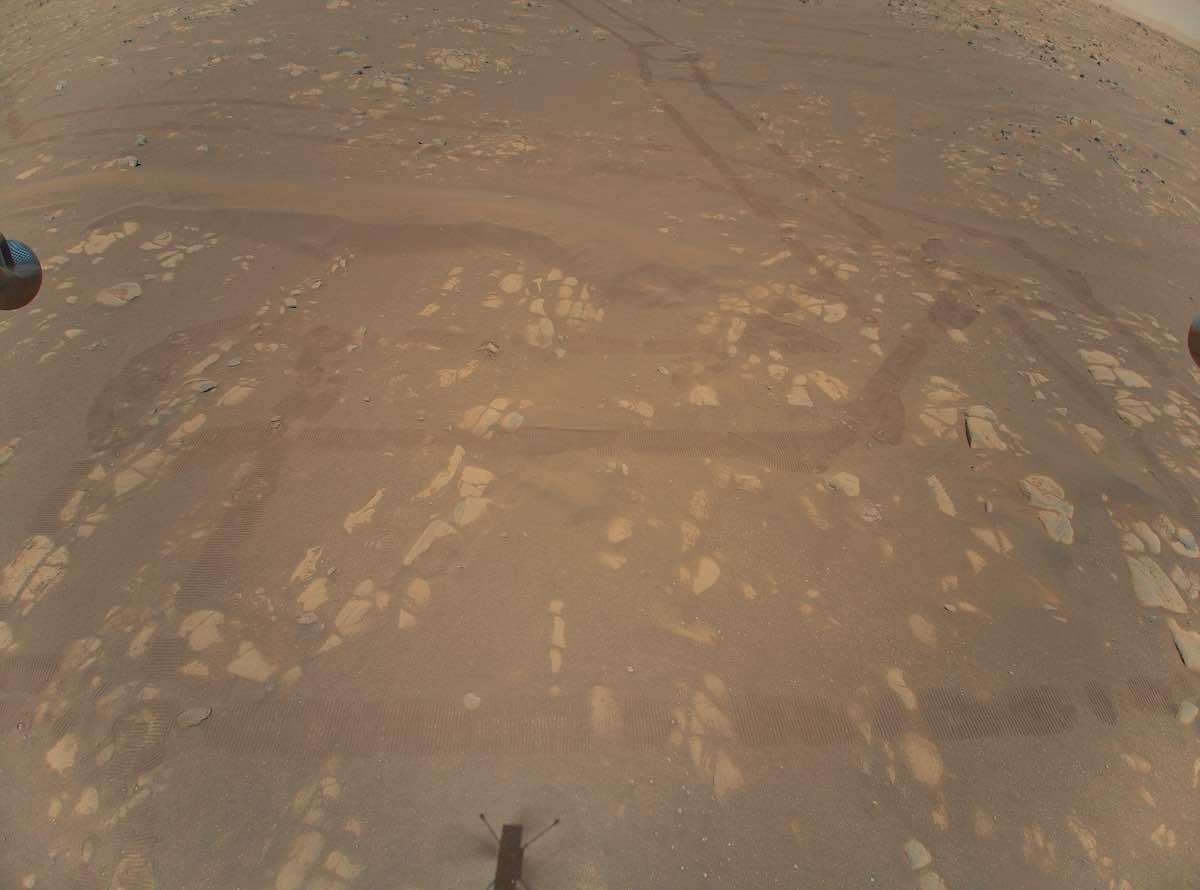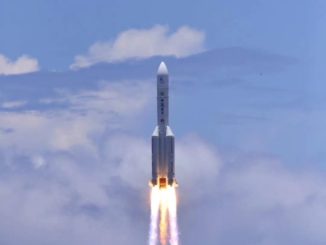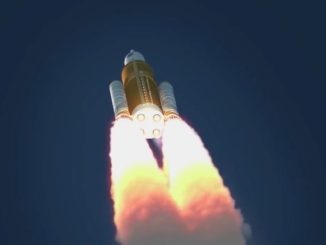
The second flight of NASA’s Ingenuity helicopter in the Martian atmosphere Thursday took the rotorcraft higher than its first hop. A third takeoff as soon as Sunday will take the helicopter more than 150 feet away from its makeshift airfield as engineers attempt more daring test flights.
Ingenuity’s ground team at NASA’s Jet Propulsion Laboratory is moving quickly with the helicopter’s test flights, aiming to accomplish five takeoffs and landings by early May. The small drone became the first aircraft to make a controlled flight in the atmosphere of another planet with a 39-second up-and-down hop to an altitude of about 10 feet (3 meters) Monday.
The helicopter’s second flight Thursday went higher to an altitude of 16 feet (5 meters). After briefly maintaining its position, Ingenuity tilted at an angle of 5 degrees to move laterally about 7 feet (2 meters), according to JPL.
The rotorcraft made three turns to point its camera in different directions, then returned to the takeoff location, or airfield, for landing. Ingenuity’s second flight lasted 51.9 seconds.
“So far, the engineering telemetry we have received and analyzed tell us that the flight met expectations and our prior computer modeling has been accurate,” said Bob Balaram, chief engineer for the Ingenuity Mars Helicopter at JPL. “We have two flights of Mars under our belts, which means that there is still a lot to learn during this month of Ingenuity.”
Ingenuity’s fuselage is not much larger than a tissue box, and its twin counter-rotating carbon-composite rotor blades span about 4 feet (1.2 meters) tip-to-tip. The entire helicopter weighed about 4 pounds (1.8 kilograms) on Earth, or 1.5 pounds under weaker Martian gravity.
NASA released a color image captured on Thursday’s flight by a side-pointing camera on the helicopter, showing tracks left by the Perseverance rover after it deployed Ingenuity onto the surface of Mars last month. Officials previously released black-and-white views from the helicopter’s down-facing camera taken during Ingenuity’s first flight Monday.
Earlier this week, officials also shared a video from a zoomed-in camera on the Perseverance rover, which is observing the Ingenuity test flights from a safe position more than 200 feet (60 meters) away.
NASA initially released wide-angle views from Perseverance, showing Ingenuity’s first flight in its entirety. The new video from Perseverance’s Mastcam-Z instrument comes from a different camera that scientists zoomed in for the test flight, revealing a sharper view of the helicopter as it took off and landed. The drawback of that view is Ingenuity quickly flies out of frame.
With two test hops in the books, engineers plan to attempt more challenging flights to extend the helicopter’s range and endurance.
Ingenuity’s third flight is scheduled early Sunday. Like Flight Two, the third flight will begin with a climb to about 16 feet, but instead of laterally moving 7 feet, the helicopter will attempt to fly more than 160 feet (50 meters) downrange from its take off location, which NASA has named “Wright Brothers Field.”
The helicopter will then return to the airfield after covering a total distance of about 330 feet (100 meters), NASA said.
“While that number may not seem like a lot, consider that we never moved laterally more than about two-pencil lengths when we flight-tested in the vacuum chamber here on Earth,” wrote Håvard Grip, Ingenuity’s chief pilot at JPL, in a blog post on NASA’s website.
For the third flight, engineers have programmed the helicopter to travel at a maximum airspeed of about 4.5 mph, four times faster than it flew on the second flight Thursday, according to Grip.
“As such, Flight Three is a big step, one in which Ingenuity will begin to experience freedom in the sky,” Grip wrote.
Plans for the fourth and fifth flights haven’t been announced. MiMi Aung, Ingenuity’s project manager at JPL, said earlier this week she hopes the helicopter can travel to distances between 600 and 700 meters, or nearly a half-mile, from its airfield — and go “as fast as we can go.”
According to Grip, the theoretical limit for Ingenuity’s altitude is constrained by the rotorcraft’s altimeter, which uses a laser range finder to measure the distance from the helicopter to the ground. That altitude limit is “probably around 10 meters (33 feet), or a little bit more, but not much more,” Grip said in a press conference after Monday’s flight.
Teams also want to ensure the helicopter stays within range of its communications relay station on the Perseverance rover.
NASA developed the Ingenuity helicopter as a technology demonstration to prove an aircraft could fly in the atmosphere of Mars, which has a density less than 1% of Earth’s at sea level.
Ingenuity carries no science instruments — just a black-and-white camera to support autonomous navigation and a color camera for horizon photos. Future rotorcraft could add an aerial dimension to planetary exploration by collecting scientific data and scouting locations inaccessible to rovers driving on the surface.
Email the author.
Follow Stephen Clark on Twitter: @StephenClark1.



